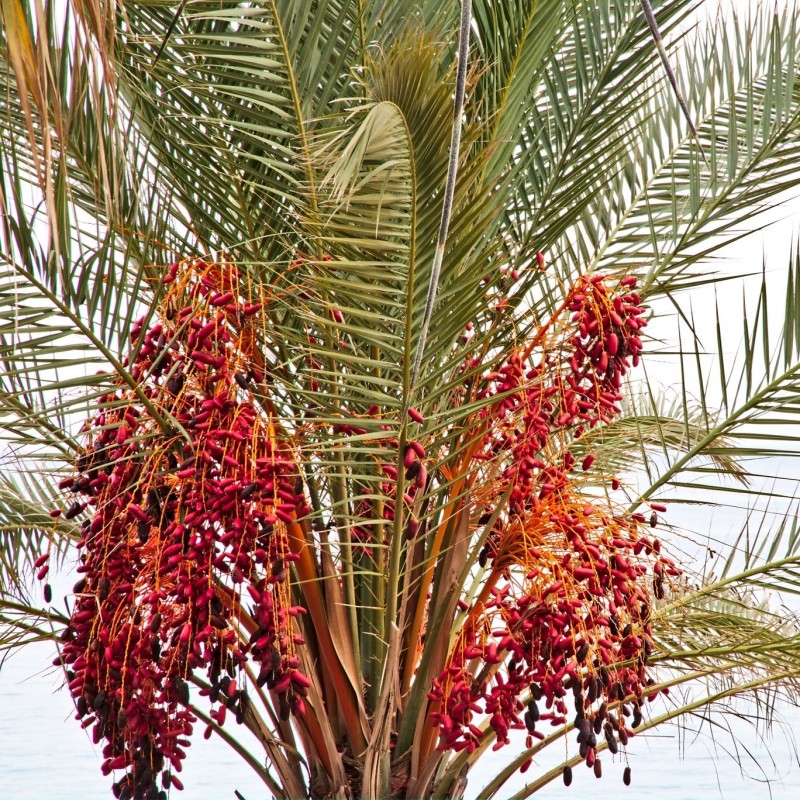Phoenix dactylifera, commonly known as the date palm, is a flowering-plant species in the palm family Arecaceae, cultivated for its edible sweet fruit called dates. The species is widely cultivated across northern Africa, the Middle East, the Horn of Africa, Australia, South Asia, and the desert regions of Southern California in the United States. It is naturalized in many tropical and subtropical regions worldwide. P. dactylifera is the type species of genus Phoenix, which contains 12–19 species of wild date palms. Date palms reach up to 60–110 feet in height, growing singly or forming a clump with several stems from a single root system. Slow-growing, they can reach over 100 years of age when maintained properly. Date fruits (dates) are oval-cylindrical, 3 to 7 centimetres (1 to 3 inches) long, and about 2.5 cm (1 in) in diameter, with colour ranging from dark brown to bright red or yellow, depending on variety. Containing 61–68 percent sugar by mass when dried, dates are consumed as sweet snacks on their own or with confections. There is archaeological evidence of date cultivation in Arabia from the 6th millennium BCE. Dates are emblematic of oasis agriculture and highly symbolic in Muslim, Christian, and Jewish religions.

